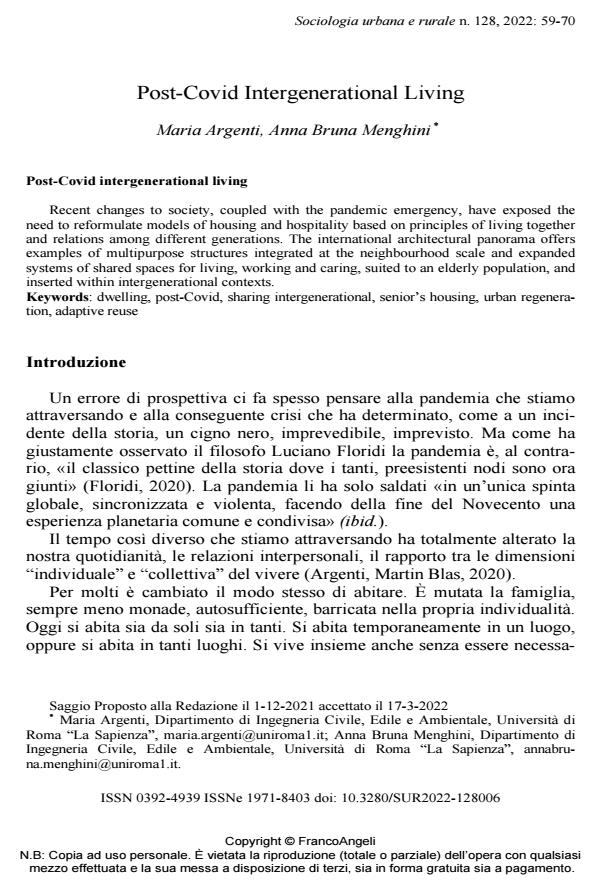Post-Covid intergenerational living
Journal title SOCIOLOGIA URBANA E RURALE
Author/s Maria Argenti, Anna Bruna Menghini
Publishing Year 2022 Issue 2022/128
Language Italian Pages 12 P. 59-70 File size 622 KB
DOI 10.3280/SUR2022-128006
DOI is like a bar code for intellectual property: to have more infomation
click here
Below, you can see the article first page
If you want to buy this article in PDF format, you can do it, following the instructions to buy download credits

FrancoAngeli is member of Publishers International Linking Association, Inc (PILA), a not-for-profit association which run the CrossRef service enabling links to and from online scholarly content.
Recent changes to society, coupled with the pandemic emergency, have exposed the need to reformulate models of housing and hospitality based on principles of living together and relations among different generations. The international architectural panorama offers exam-ples of multipurpose structures integrated at the neighbourhood scale and expanded systems of shared spaces for living, working and caring, suited to an elderly population, and inserted within intergenerational contexts.
Keywords: dwelling, post-Covid, sharing intergenerational, senior’s housing, urban regenera-tion, adaptive reuse
Maria Argenti, Anna Bruna Menghini, Post-Covid Intergenerational Living in "SOCIOLOGIA URBANA E RURALE" 128/2022, pp 59-70, DOI: 10.3280/SUR2022-128006